The Advantages and Disadvantages of Wireless Surveillance Cameras: A Comprehensive Guide
Wireless surveillance cameras have become increasingly popular in recent years as advancements in technology have made them more affordable and easier to set up. These devices, which are used for security purposes in both residential and commercial settings, offer a number of advantages over traditional wired cameras. However, they also come with their own set of drawbacks that must be taken into consideration before investing in such systems. In this comprehensive guide, we will explore the various advantages and disadvantages of wireless surveillance cameras to help you make an informed decision about whether or not they are the right choice for your security needs.
The Benefits of Wireless Surveillance Cameras
- Convenience: Wireless surveillance cameras offer flexibility in installation, allowing them to be placed virtually anywhere without the constraints of wiring. This makes it easier to cover blind spots and areas that are difficult to reach with traditional wired cameras.
- Remote Access: With wireless surveillance cameras, users can access live feeds and recordings from their smartphones or computers, providing real-time monitoring even when they’re not on-site. This feature is especially useful for homeowners and business owners who want to keep an eye on their property when away.
- Cost-Efficiency: While the initial cost of wireless surveillance cameras may be higher than wired ones, the long-term savings from reduced installation and maintenance costs make them a cost-effective choice. Additionally, they can easily be moved or expanded without the need for extensive rewiring.
Advantages of Using Wireless Security Cameras
- Convenience: One key advantage of wireless security cameras is the convenience they offer. Unlike traditional wired cameras, these systems are easy to install and can be placed virtually anywhere without the need for extensive cabling. This makes them ideal for both home and business use, allowing users to set up surveillance quickly and efficiently.
- Flexibility: Wireless security cameras provide a high level of flexibility in terms of placement. With no wires to limit their location, these cameras can be easily moved or repositioned as needed. This allows users to adapt their surveillance setup based on changing needs or security concerns without the hassle of rewiring.
- Remote Access: Another major benefit of wireless security cameras is the ability to access footage remotely. By connecting these cameras to a network, users can monitor live feeds or review recorded footage from any internet-enabled device, such as smartphones or tablets. This feature provides added peace of mind by allowing for real-time monitoring even when away from the premises.
Potential Risks and Drawbacks of Wireless Surveillance Cameras
- Interference: One significant risk with wireless surveillance cameras is the potential for interference. Other devices using the same frequency range can disrupt or even disable the camera’s signal, leading to gaps in coverage or complete loss of footage.
- Cybersecurity Vulnerabilities: Another drawback is the susceptibility of wireless cameras to hacking. Without proper security measures in place, these cameras can be accessed by unauthorized individuals, compromising privacy and potentially putting sensitive information at risk.
- Limited Range: Wireless surveillance cameras often have a limited range compared to their wired counterparts. This can result in dead spots where there is no coverage, leaving areas vulnerable to unauthorized activity without being recorded.
Security Risks Associated with Wireless Camera Systems
- Vulnerability to Hacking: Wireless camera systems can be susceptible to hacking if not properly secured. Hackers can gain access to the cameras, potentially compromising the privacy and security of the property being monitored.
- Signal Interference: Wireless camera signals can be interrupted by obstacles or other electronic devices operating on similar frequencies. This interference can result in poor video quality or loss of signal, leaving blind spots in surveillance coverage.
- Potential for Signal Jamming: Malicious individuals could use signal jammers to disrupt wireless camera systems, preventing them from transmitting video footage. This could leave the premises vulnerable to unauthorized access or criminal activity without any recording evidence.
Why Choose Wireless Surveillance Devices Over Wired Systems
- Ease of Installation: With wireless surveillance devices, you can say goodbye to the hassle of running cables through walls and ceilings. Simply mount the cameras in your desired locations and connect them wirelessly to your monitoring system.
- Flexibility and Mobility: Wireless surveillance cameras give you the flexibility to move them around as needed without being constrained by wires. This mobility allows for easy repositioning based on changing security needs or new areas requiring monitoring.
- Remote Viewing: Enjoy the convenience of accessing live footage from your wireless surveillance devices remotely using a smartphone, tablet, or computer. Keep an eye on your property even when you’re away, enhancing peace of mind and security.
Comparing Wired vs Wireless CCTV Systems
- Installation:
- Wired: Requires professional installation for cable management.
- Wireless: Can be easily installed by homeowners without the need for complex wiring.
- Reliability:
- Wired: Generally considered more reliable due to stable connections.
- Wireless: Susceptible to interference from other wireless devices, leading to potential signal disruptions.
- Flexibility:
- Wired: Limited mobility due to fixed cable connections.
- Wireless: Offers greater flexibility in camera placement and easy relocation if needed.
Limitations of Wireless Security Cameras
- Limited Range: Wireless security cameras may have limited range compared to wired ones, especially in areas with a lot of interference. This can lead to signal dropouts and potential blind spots in your surveillance coverage.
- Potential Interference: Wireless signals can be susceptible to interference from other electronic devices or even physical obstacles like walls or metal structures. This interference can impact the quality of the video feed and overall functionality of the camera system.
- Security Concerns: Despite their name, wireless security cameras are not immune to hacking or unauthorized access. Weak encryption protocols or outdated software can make these cameras vulnerable to cyber threats, compromising the privacy and integrity of your surveillance footage.
The Overall Benefits of Wireless Video Surveillance
- Flexibility: Wireless surveillance cameras can be placed in various locations without the need for extensive wiring, allowing for more flexibility in choosing optimal monitoring spots.
- Cost-effective: Installation costs are lower compared to wired systems, as there is no need to run cables throughout the property. This makes wireless video surveillance a budget-friendly option.
- Easy scalability: Adding more cameras to your system is simple with wireless technology, making it easy to expand your surveillance coverage as needed.





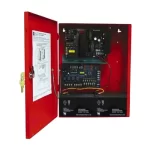

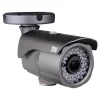
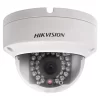
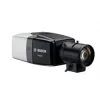
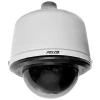


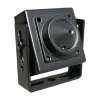
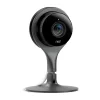
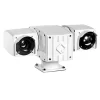
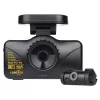
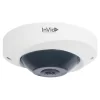


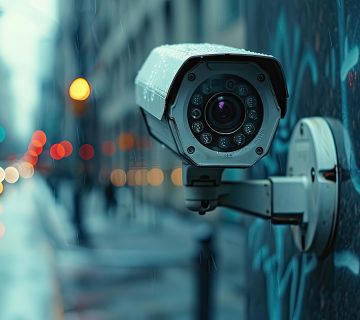

No comment